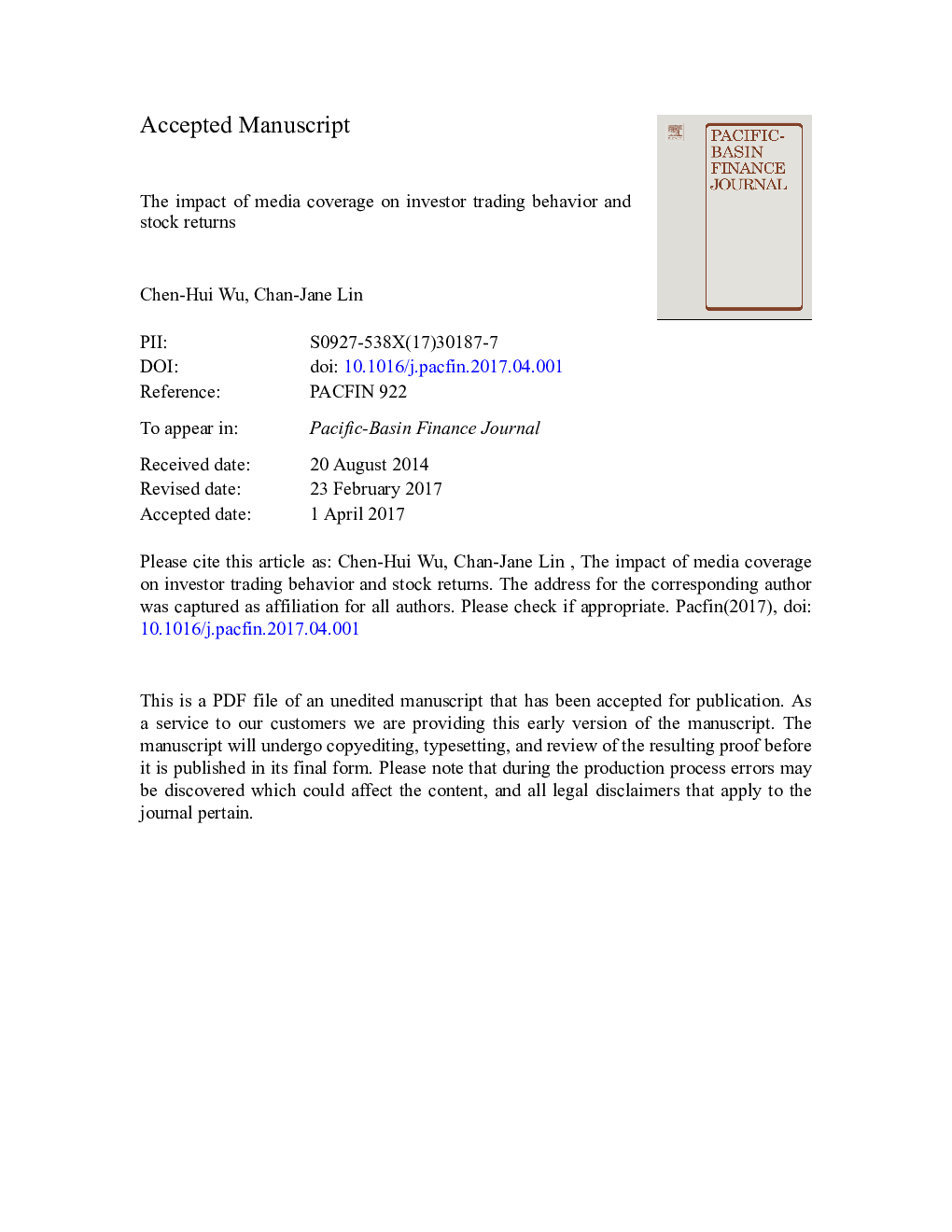| Article ID | Journal | Published Year | Pages | File Type |
|---|---|---|---|---|
| 5102319 | Pacific-Basin Finance Journal | 2017 | 66 Pages |
Abstract
The investor recognition hypothesis suggests that, when a firm is recognized by investors through the mass media, this helps to increase the firm's investor base and causes reactions in stock prices. Using a comprehensive database of media coverage on Taiwanese listed firms, this paper applies textual analysis to the news content and classifies it into ten news categories. Among them, seven news categories can be identified as conveying a positive or negative tone and the remaining three are news announcements. The empirical results show that investor trading behavior is affected not only by the quantity, but also the quality, of news announcements. Different types of investors have different responses to the tone of media coverage. The trading behavior of foreign institutional investors is consistent with the tone of media coverage. The results are robust after accounting for the effect of several firm risks, characteristics and investors' unobservable private information. In addition, the majority of the positive or negative media coverage classified in this paper is significantly related to the same sign of abnormal returns.
Keywords
Related Topics
Social Sciences and Humanities
Economics, Econometrics and Finance
Economics and Econometrics
Authors
Wu Chen-Hui, Lin Chan-Jane,
